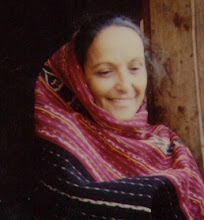

A MGF na Guiné-Bissau
Assim, estima-se que hoje 300.000 meninas estão afectadas, com outras cerca de 80.000 meninas, de praticamente todas as idades, em perigo de serem mutiladas.
São praticadas várias formas de clitoridectomia nas comunidades islamizadas. Em algumas etnias o clítoris é removido totalmente, em outras parcialmente.
Há indícios de que na zona de Bafatá/Gabú é praticada a infibulação em pequenas comunidades rurais.
A MGF está inserida, como preceito obrigatório, no ritual de iniciação, chamado “Fanado”, das meninas dos grupos islamizados.
As comunidades com esta prática vivem sobretudo no Leste (regiões de Bafatá e Gabú), no Norte (Oio e Cacheu) e no Sul (Quínara, Tombali e Bolama-Bijagós). Podemos considerar que a MGF é praticada em todo o país.
Os grupos que praticam a MGF são Fulas, Mandigas, Nalus, Susus e Beafadas. É frequente que meninas de grupos animistas (balantas, papéis, etc.) participam nos Fanados dos grupos islamizados dada a proximidade nas aldeias entre os vários grupos étnicos.
A entrada destas meninas nos Fanados de etnias islamizadas é frequentemente contra vontade dos familiares – o que muitas vezes provoca problemas dentro das comunidades. Após a entrada no Fanado é muito difícil e complexo resgatar uma criança.
Todos os grupos islamizados, realizam os Fanados em longas cerimónias até 6 semanas de duração, que incluem rituais com danças e cantos, além de instruções práticas e morais sobre o papel da mulher adulta nas respectivas sociedades.
Em algumas etnias, onde o casamento é muito precoce, meninas de 12 anos vão ao ritual de iniciação já estando casadas. Possivelmente estas meninas como ainda não têm o período de menstruação não têm actividade sexual com o marido. Elas estão no casamento à “guarda” da primeira esposa, esperando pela sua iniciação sexual.
Entre a população urbana com educação formal a MGF tem tendência a ser menos praticada, mas de nenhum modo é incomum. Para pais e mães com uma postura crítica em relação à MGF é bastante difícil impor-se entre os partidários da prática no círculo familiar, sobretudo nas avós.
Em 1995 o parlamento recusou um projecto de lei contra a MGF. Tem ocorrido um intenso debate público em torno de uma possível lei contra a MGF, no qual o presidente da Comissão Nacional Islâmica pôs-se a favor da prática e o presidente da Liga Guineense dos Direitos Humanos, contra a prática, verificando-se assim um tema fracturante na sociedade guineense.
É complexo resumir em poucas palavras o significado cultural desta prática; as culturas em que ocorre são muito diversas. As razões e significados centram-se, essencialmente, em definições sociais de feminilidade e em posturas relativas à sexualidade das mulheres e ao casamento. Para uma mãe ou para uma avó, numa sociedade em que existe pouca viabilidade económica assegurar que a sua filha se sujeite à MGF, enquanto criança ou adolescente, é um acto de amor com vista a garantir-lhe o casamento. Devido à natureza muito secreta desta prática, a MGF é realizada e aprovada pela sociedade como parte da sua identidade cultural, sentido de lealdade para com a família, sentido de pertença no grupo e crença num sistema de valores.
Paula da Costa





